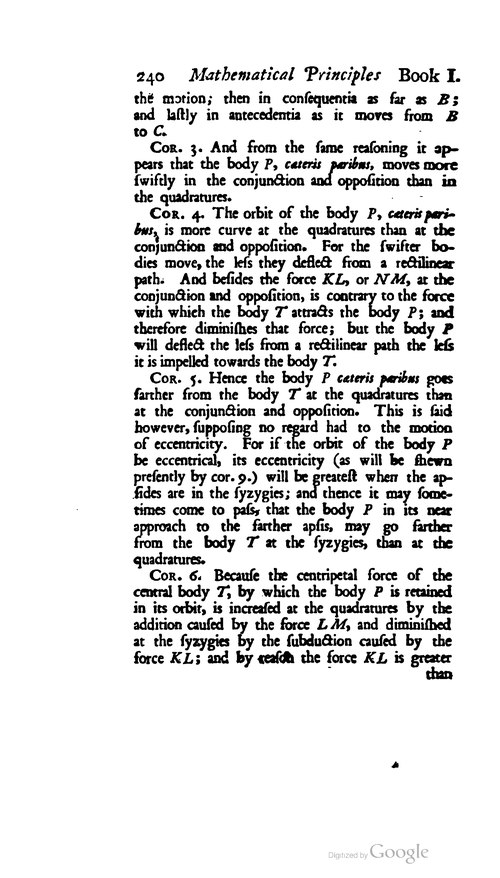the motion; then in conſequentia as far as B; and laſtly in antecedentia as it moves from B to C.
Cor. 3. And from the ſame reaſoning it appears that the body P, cæteris paribus, moves more ſwiftly in the conjunction and oppoſition than in the quadratures.
Cor. 4 The orbit of the body P, cæteris paribus, is more curve at the quadratures than at the conjunction and oppoſition. For the ſwifter bodies move, the leſs they deflect from a rectilienar path. And beſides the force KL, or NM, at the conjunction and oppoſition, is contrary the force with which the body T attracts the body P; and therefore diminiſhes that force; but the body P will deflect the leſs from a rectilinear path the leſs it is impelled towards the body T.
Cor. 5 Hence the body P cæteris paribus goes farther from the body T at the quadratures than at the conjunction and oppoſition. This is ſaid however, ſuppoſing no regard had to the motion of eccentricity. For if the orbit of the body P be eccentrical, its eccentricity (as will be ſhewn preſently by cor. 9.) will be greateſt when the apſides are in the ſyzygies; and thence it may ſometimes comme to paſs, that the body P in its near approach to the farther apſis, may go farther from the body T at the ſyzygies, than at the quadratures.
Cor. 6. Becauſe the centripetal force of the central body T, by which the body P is retained in its orbits, is increaſed at the quadratures by the addition cauſed by the force LM, and diminiſhed at the ſyzigies by the ſubduction cauſed by the force KL; and by reason the force KL is greater
